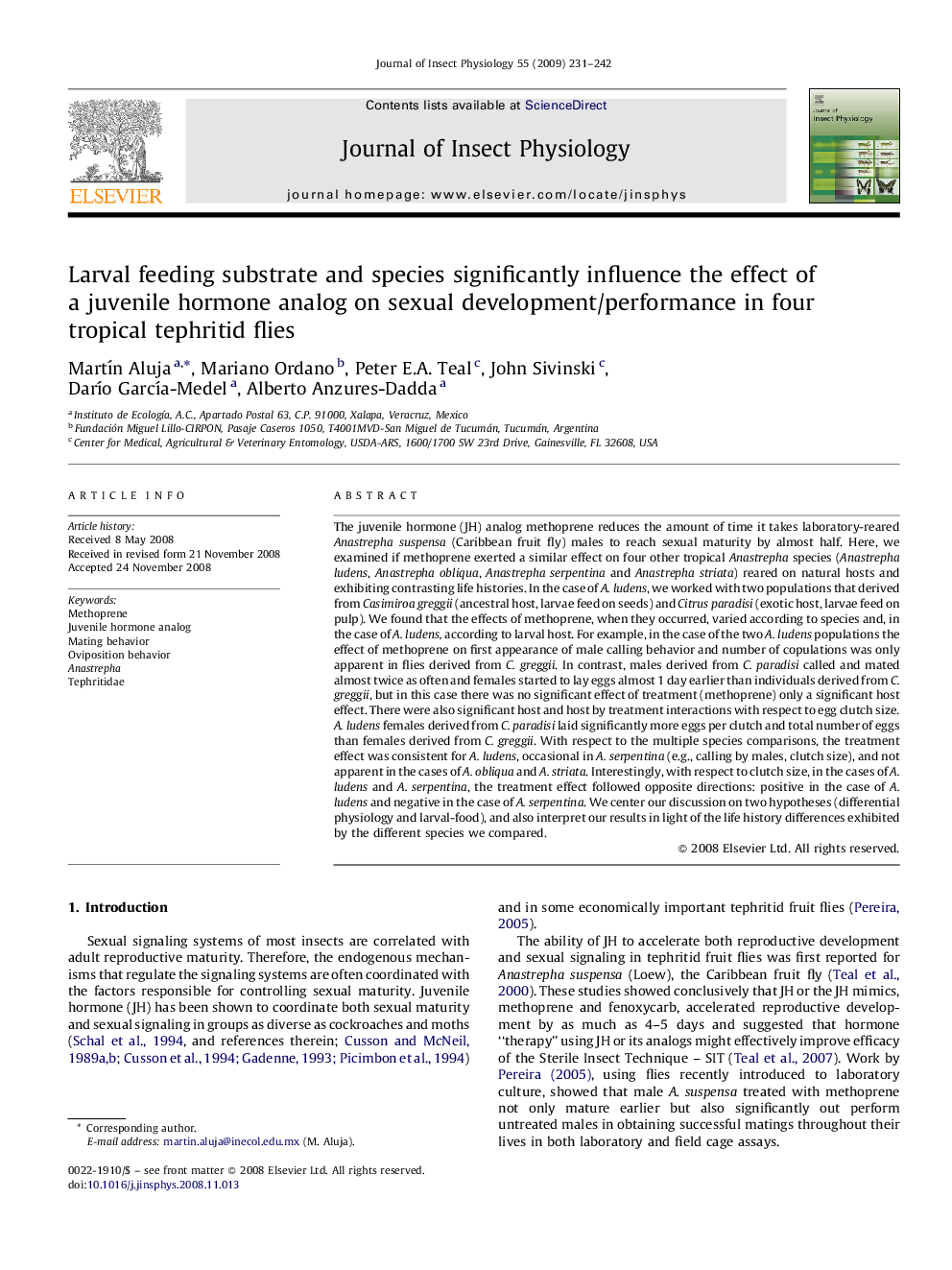| کد مقاله | کد نشریه | سال انتشار | مقاله انگلیسی | نسخه تمام متن |
|---|---|---|---|---|
| 2841072 | 1165375 | 2009 | 12 صفحه PDF | دانلود رایگان |

The juvenile hormone (JH) analog methoprene reduces the amount of time it takes laboratory-reared Anastrepha suspensa (Caribbean fruit fly) males to reach sexual maturity by almost half. Here, we examined if methoprene exerted a similar effect on four other tropical Anastrepha species (Anastrepha ludens, Anastrepha obliqua, Anastrepha serpentina and Anastrepha striata) reared on natural hosts and exhibiting contrasting life histories. In the case of A. ludens, we worked with two populations that derived from Casimiroa greggii (ancestral host, larvae feed on seeds) and Citrus paradisi (exotic host, larvae feed on pulp). We found that the effects of methoprene, when they occurred, varied according to species and, in the case of A. ludens, according to larval host. For example, in the case of the two A. ludens populations the effect of methoprene on first appearance of male calling behavior and number of copulations was only apparent in flies derived from C. greggii. In contrast, males derived from C. paradisi called and mated almost twice as often and females started to lay eggs almost 1 day earlier than individuals derived from C. greggii, but in this case there was no significant effect of treatment (methoprene) only a significant host effect. There were also significant host and host by treatment interactions with respect to egg clutch size. A. ludens females derived from C. paradisi laid significantly more eggs per clutch and total number of eggs than females derived from C. greggii. With respect to the multiple species comparisons, the treatment effect was consistent for A. ludens, occasional in A. serpentina (e.g., calling by males, clutch size), and not apparent in the cases of A. obliqua and A. striata. Interestingly, with respect to clutch size, in the cases of A. ludens and A. serpentina, the treatment effect followed opposite directions: positive in the case of A. ludens and negative in the case of A. serpentina. We center our discussion on two hypotheses (differential physiology and larval-food), and also interpret our results in light of the life history differences exhibited by the different species we compared.
Journal: Journal of Insect Physiology - Volume 55, Issue 3, March 2009, Pages 231–242